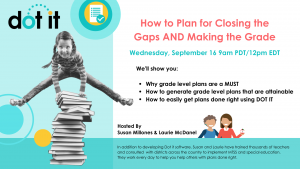“Given direct, explicit instruction…”
In this post, you will ask yourself four questions about given statements in your MTSS plans or IEPs.
- Can you explain what your given statements do to address a specific problem or impact?
- Are your given statements almost all the same?
- Do your given statements show different levels of support?
- Do you need multiple conditions in your given statement?
You may think of given statements as the least of your worries when writing a plan. However, done right, your given statements are the key to unlocking learning for a student who needs to meet that goal. In our research and work, we have read, written, and trained on thousands of MTSS plans and IEPs. We noticed that uninspired, and worse, misaligned given statements were…well…a given. So what exactly is a given statement and how can you use them to empower your plans?
The given statement is a phrase at the beginning of an MTSS or IEP goal that describes the conditions, such as what, where, and/or how much support needs to be “given” for the student to accomplish the goal. By writing the given statement, you are communicating that this individual student requires these particular conditions to meet the goal.
Question 1: Can you explain what your given statements do to address the problem or impact of a disability?
 First, you should be able to explain to a parent in a meeting why you are providing certain conditions to the student’s goals. Each condition in your given statement should address the problem or the impact of the disability directly. Take Jonathan for example. His weak memory skills are impacting his performance in math. Jonathan requires strategies that help him remember facts and information. In tier 2 his given statement might read…
First, you should be able to explain to a parent in a meeting why you are providing certain conditions to the student’s goals. Each condition in your given statement should address the problem or the impact of the disability directly. Take Jonathan for example. His weak memory skills are impacting his performance in math. Jonathan requires strategies that help him remember facts and information. In tier 2 his given statement might read…
“Given pre-teaching and reteaching of multiplication concepts with multiple response opportunities and frequent checks for understanding…”
Because his memory deficit is significant Jonathan qualifies for specially designed instruction. His special education teacher has the expertise and capacity to provide it. The given statement in his math IEP goal might read…
“Given multisensory instruction with manipulatives and immediate feedback…”
These given statements provide Jonathan with strategies that help his memory. It is well known that students with poor working memory need many more response opportunities than their general education peers. You could share with Jonathan’s mom that you will support his difficulty with remembering facts and information. At the beginning of the lesson, you will give him instruction so he can see, hear, and feel the concept. In the middle of the lesson, you will help him engage by using manipulatives. At the end of the lesson, when Jonathan is showing what he knows, you will provide feedback immediately. What a lovely way to let Jonathan’s mom know that you empathize with his learning challenge and you know what to do to teach him!
Question 2: Are your given statements almost all the same?
 Second, your given statements should be purposeful. Jonathan’s given statements should differ from Liza’s given statements. Because Liza is an ELL student with weak verbal skills, her given statement in a math IEP goal might read…
Second, your given statements should be purposeful. Jonathan’s given statements should differ from Liza’s given statements. Because Liza is an ELL student with weak verbal skills, her given statement in a math IEP goal might read…
“Given key math vocabulary instruction, pictorial representations, and descriptive feedback…”
Jonathan and Liza may have similar goals. Yet, you can see that their different challenges require different conditions. Jonathan requires conditions to help him remember. Liza’s weak verbal skills mean she likely needs strategies to help her understand the meaning.
Once you understand the problems and impacts, you can determine which conditions each student will require. You can imagine teaching both of these students in one group together. You can authentically “give” each one what they need. If you are a dot it user, you know that dot it will generate 3 options for individualized given statements based on simple questions your team answers in our system. If you don’t have dot it yet, you can individualize your given statements by:
- how you will present concepts. For example, describe the level of content or type of instructional approach
- how you will support engagement. For example, identify tools and resources like graphic organizers or math manipulatives.
- how you will support the expression of understanding. For example, define types of feedback or checks for understanding.
Question 3: Do your given statements show different levels of support?
Third, your given statements should reflect a logical continuum of support. For students served in MTSS, it is helpful to keep your given statements consistent. The purpose of MTSS is to evaluate student responses to high-quality instruction, or RTI. If you are a dot it user you know that we recommend revisiting the core concept in a smaller group in tier 2. In tier 3, remediate prerequisite concepts and skills.
Once a student qualifies for specially designed instruction, you are legally responsible for a continuum of services. A student who is one grade level behind in reading due to a comprehension deficit probably requires a low level of support. A student who is three or four grade levels behind and whose cognitive scales all fall in the very low range probably requires a higher level of support. If you are a dot it user, you may have noticed the differences between tier 2 and tier 3 MTSS plans and the low, moderate, and high level supports in your IEP given statements. Here are some examples of how to create a logical continuum from lower to higher levels of support:
- Content Level- ex. choose grade level, instructional level, or modified texts
- Tool Level- ex.-choose abstract tools like graphic organizers, pictorial tools like diagrams, or concrete or real-life examples.
- Feedback Level- ex. choose check-ins, descriptive feedback, or immediate corrective feedback
Question 4: Do you need multiple conditions in your given statement?
Fourth, your given statement will almost always include multiple conditions.
The acceptable answer to this question is “it depends”. It is understood that your team should plan based on the least restrictive environment and the most optimal strategies. In reality, the answer to this question is almost always yes. The student requires multiple conditions to meet a goal.
Here is why. If a student has a need for an MTSS plan or an IEP, he or she is already in need of serious attention. In education, we tend to underwhelm overwhelming problems by trying one thing at a time. Rarely will one strategy be powerful enough to close the gaps. In order to accelerate learning and achieve catch up growth, combine strategies like in the examples above. When you do that your plan is much more likely to succeed.
Given statements are so much more than opening phrases. For one thing, they reflect a team’s true understanding of neurodiverse learners and their level of need. Most importantly, they help you fulfill your true role…connecting every student to the standards.

Want to know more about us? Join this month’s webinar.






